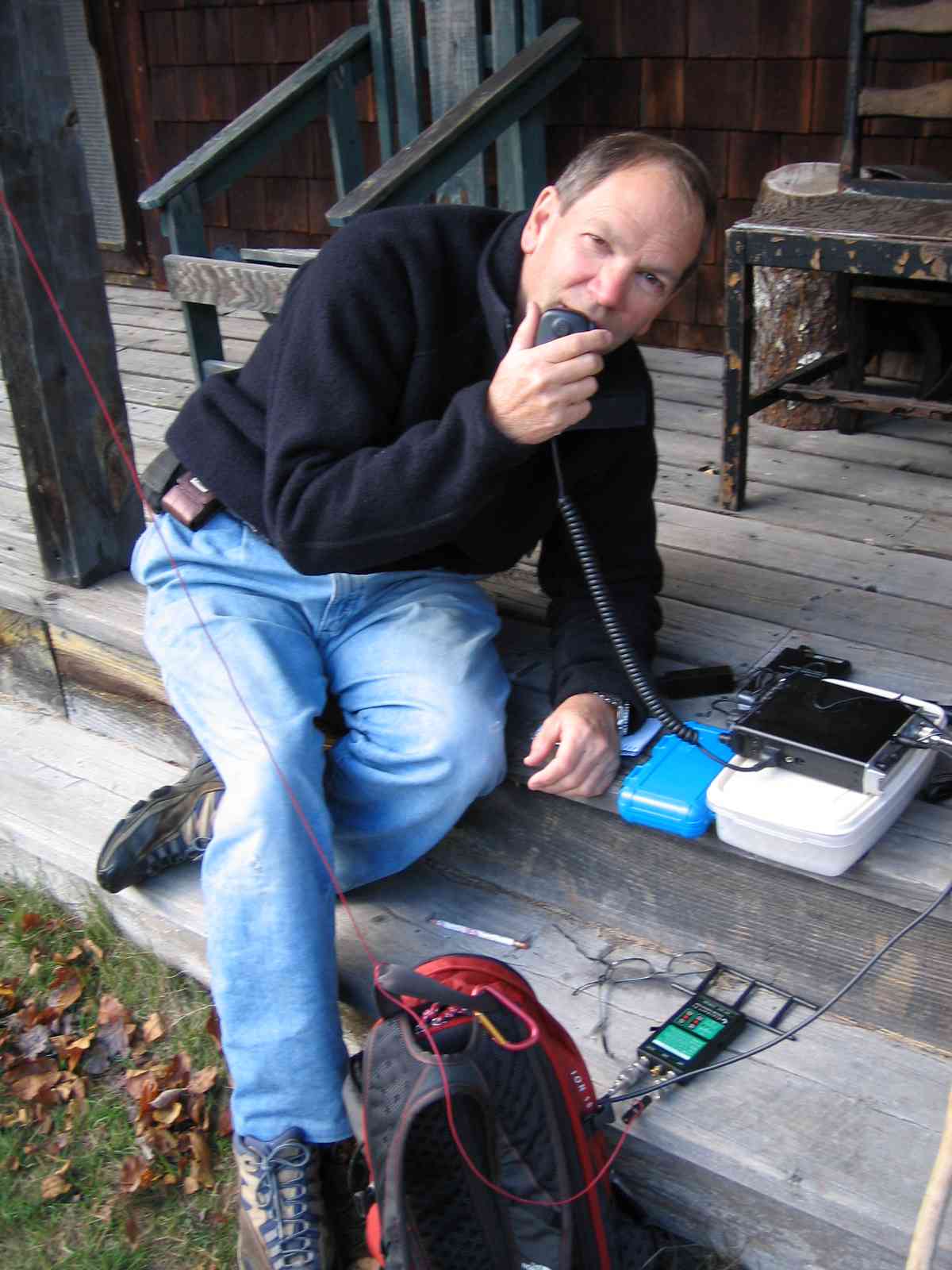What's a Microphone?
Working SSB QRP in the Field
October 2007
For the first time in 15 years, I took a microphone
to the field with me. It was an experiment... and
it worked. In barely a half hour I logged seven
countries with five watts SSB.
Sure I know how to use a microphone, but it never
seemed like the right way to do QRP outdoors. I've
always done CW. It's more efficient... five watts of
CW is like 50 watts of SSB. CW lets you use
smaller rigs, and I just enjoy it more than voice.
But this was the CQ Worldwide DX Contest... all SSB,
and it would be interesting to see how I made out. So I
invited my wife, packed up the gear, and headed for
Knox Mountain.
It's about a mile and a half hike to the cabin and
the pond. It's a wonderful fall walk alongside
a sparkling mountain stream. The pond has been
drained recently to make repairs on the dam, but
grass has grown up, and it's still beautiful.

The view from the cabin
I put up an inverted L. It went straight up 30 feet
from my backpack and then over about 40 feet
to a second tree. I used the FT-817 at 5 watts
with the Elecraft T-1 tuner. The battery is a 10.4
volt Li-Po rated at 4.5 amps.
First I checked 15 meters, and it was very active
with strong signals. Within five minutes I
worked Cuba, Aruba and the Galapagos Islands.
During the next ten minutes I worked Netherlands
Antilles, Grand Cayman Island, Puerto Rico and
Finland. Not bad for five watts and a quick
antenna setup.

Yes, It's a microphone
For those who prefer SSB, these contacts are
only a harbinger of things to come. Working
DX during the bottom of the solar cycle is a
bit challenging. It will become a lot easier as
conditions improve. Here are a few tips that
will help your chances no matter what the
conditions are:
1) Operate on the highest band that's open. DX
with low power is much easier on 10 and 15
meters. 2) Use the best antenna you can. My
friend Seab, AA1MY, rarely operates unless
he can get at least an 88 foot dipole up 50
feet. That antenna is probably four times
better than the one I used. 3) Operating during
a major contest increases your chances... toward
the end of the contest stations are hungry for
additional contacts and will often make the extra
effort needed to work a weak station. 4) When
you're choosing a station to call, pick the
strongest ones on the band... they're the most
likely to hear you.
All this talking was kind of disconcerting, and I
soon pulled out the paddles. My final contact
was more comfortable... F6BCW, Didier in
Burgundy, France gave me a 569 report on 20
meters. The winds picked up and we were
getting chilly, so we hiked back out to the
road.
At least now I can say with confidence that, yes,
you can work real DX on SSB while in the field
with only five watts!
-end-

